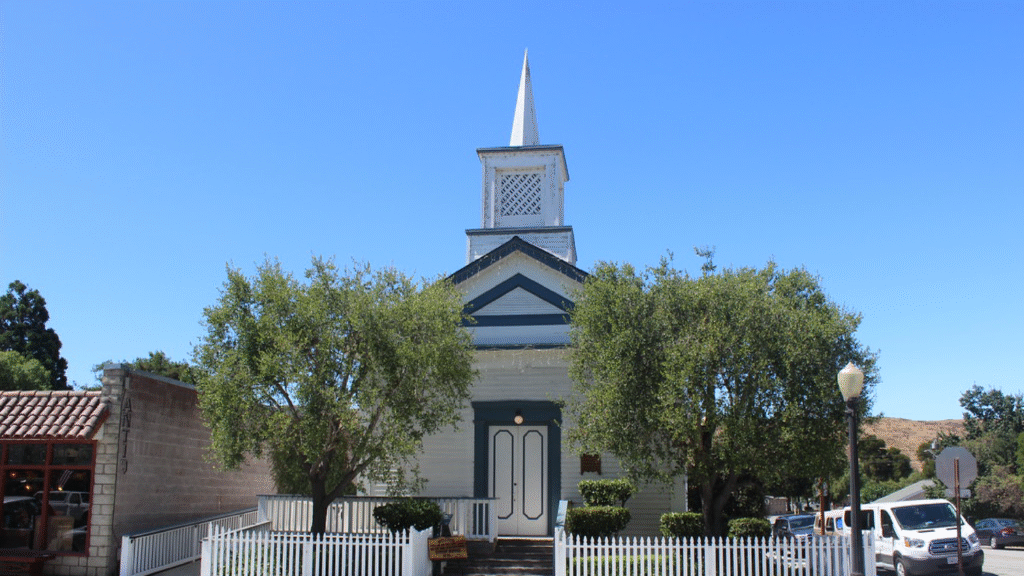1. A surviving—and thriving—legacy
Founded on June 24, 1797, by Father Fermín de Lasuén, Mission San Juan Bautista became the heart of the town that grew around it (mynspr.org, californiamissionsfoundation.org). Today, it remains both an active parish and one of the most authentic tourist destinations along California’s historic El Camino Real (sanjuanbautistaca.com).
What makes it unique? It’s the only mission that has preserved its original Spanish Plaza, surrounded by historic adobe structures (oldmissionsjb.org). Its church is also remarkable for having three naves—restored in 1975 to its original design (californiamissionsfoundation.org, latimes.com).
2. Earthquakes and resilience
Perched directly on the San Andreas Fault, the mission has endured numerous earthquakes, including the devastating 1812 tremors that damaged its arches and the infamous 1906 quake that destroyed parts of its outer walls (latimes.com). Yet through community dedication and multiple restoration efforts, Mission San Juan Bautista stands as a symbol of cultural resilience (savemissionsjb.org).
3. From history to culture
The mission’s surrounding historic district is a living museum. Buildings like the Plaza Hotel, Zanetta House, and old stables have been carefully restored and repurposed as museums, shops, and cultural spaces (californiamissionsfoundation.org).
Among its treasures are the original choir books written by Father Tapis, showcasing early 19th-century music composition and traditions, which are now preserved in the mission museum (mynspr.org).
Mission San Juan Bautista also has a place in Hollywood history: it famously appeared in Alfred Hitchcock’s “Vertigo” (1958), where its architecture was reimagined through models and cinematic effects (es.wikipedia.org).
4. A cultural revival in motion
For decades, San Juan Bautista has hosted Living History Days, immersive events where locals and visitors dress in 19th-century attire, reenact daily life, and experience California’s heritage firsthand (latimes.com).
With a population of just 2,000 residents, this town thrives as a hub of heritage tourism and cultural preservation, striking a balance between honoring its Spanish colonial past and maintaining a vibrant, modern community (en.wikipedia.org).


